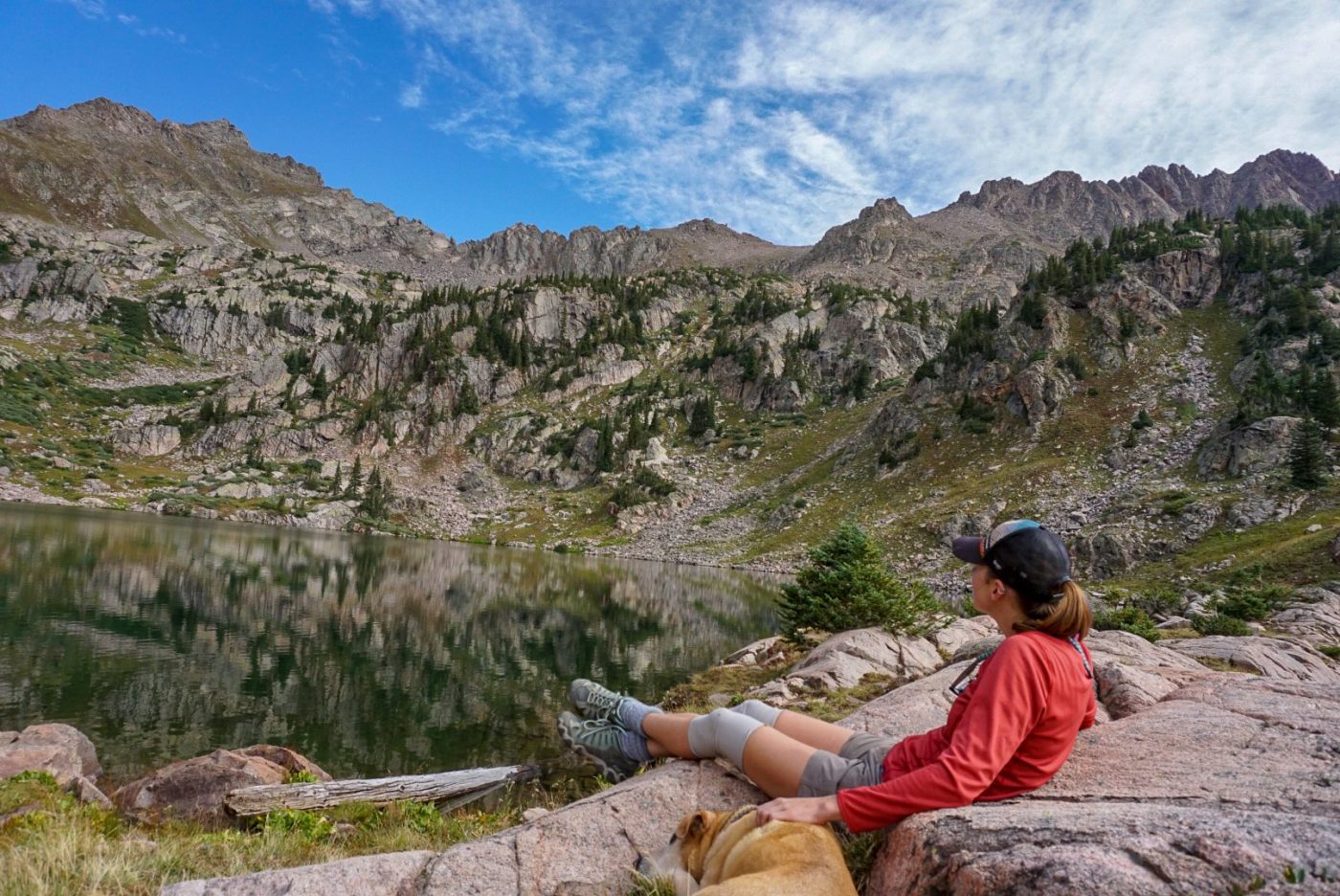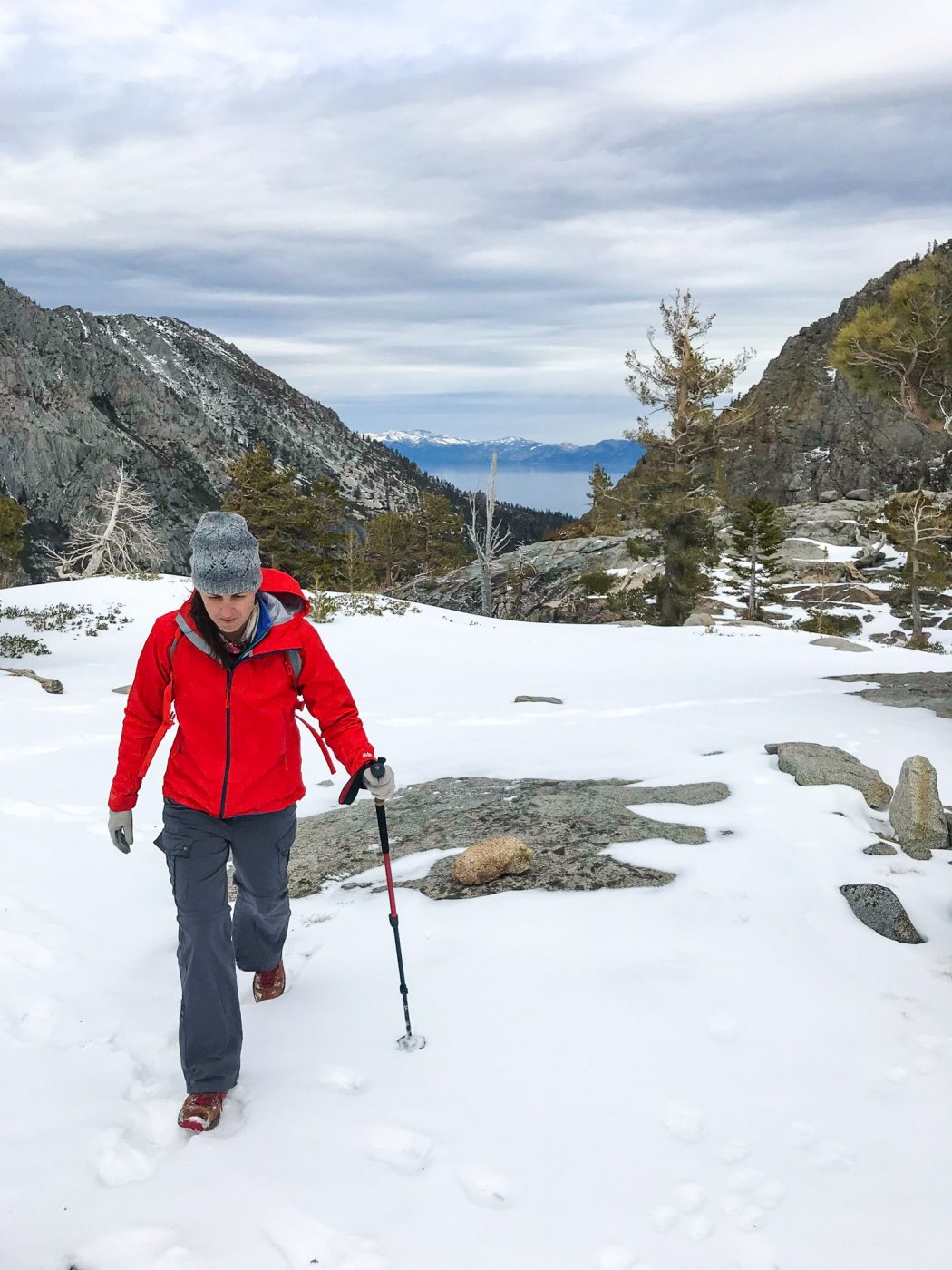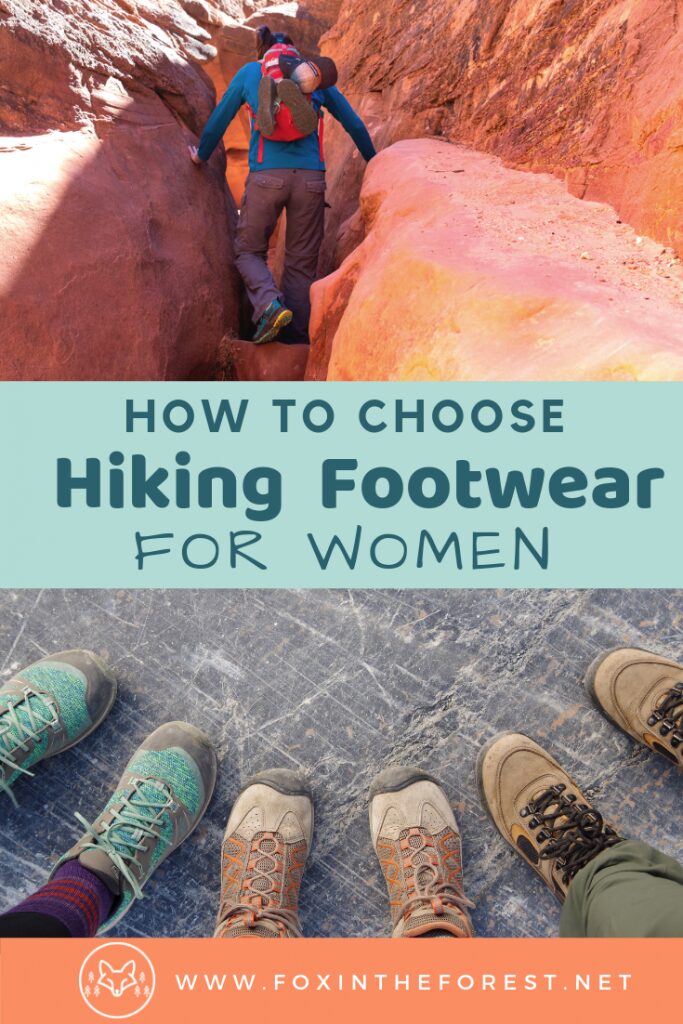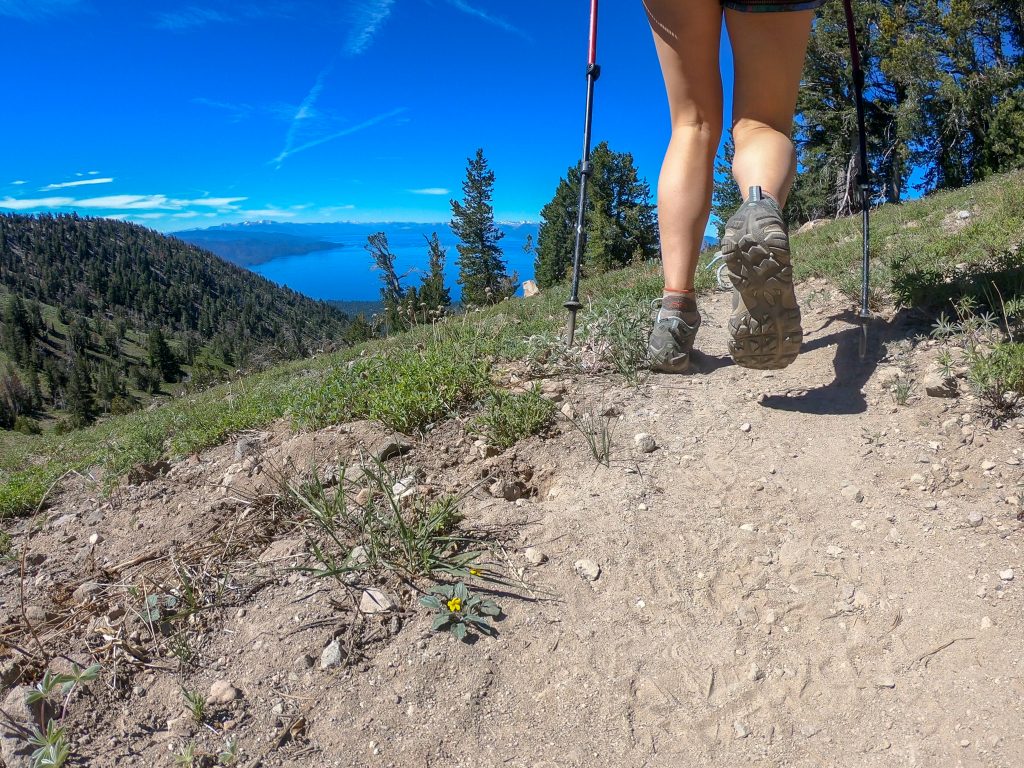Last Updated on November 5, 2021 by foxintheforest
You’re finally ready for the perfect pair of winter hiking boots. Or perhaps you’re looking to upgrade your favorite pair of women’s hiking shoes because the soles have finally given out. When it comes to your tootsies on the trail, it’s important to only have the best. This post dives into how to choose hiking boots and shoes for women on any budget.
How to Choose Women’s Hiking Footwear
Before you step foot in the store, think about what activities you plan to do. Are you hiking primarily in the mountains over rock? Or are you on dirt trails? Do you climb and scramble around? Is there a lot of water on your local trails? If you know the answers to these questions, then you’ll likely want to select a shoe specific to your trail niche. Here’s a look at the best type of hiking footwear for women based on activity:
- Hikes with lots of water crossings: You’ll want a grippy sole made of solid rubber. Deeper, grooved treads are ideal. Look for a GTX label on the boot or shoe model, this means waterproof with GoreTex technology, which is the gold standard.
- Hiking over rock in dry climates: Opt for a sole that has a suction-cup pattern. Approach shoes or boots will give you the grip you need, but they tend to be made with soft rubber as a result and will need to be replaced more often
- Hiking in snow or wet climates: Go for a women’s hiking boot or shoe that has water a waterproof coating. Consider insulation for cold climates.
- Humid climates: You want your hiking shoe or boot to breathe. Opt for a breathable mesh and lightweight footwear.
- Backpackers: Stability with a heavy load is key. Opt for a hiking boot or shoe that can handle heavy loads and still provide support.
- Thru-hikers: Weight is everything. Most thru-hikers use hiking shoes instead of hiking boots. Look for a lightweight shoe that will last as long as possible. Also, remember to budget for multiple pairs during your through hike.
Newbie hikers rejoice! I’ve written a comprehensive guide to hiking for beginners so you can get your best foot forward on the trail this year.
Women’s Hiking Boots vs Women’s Hiking Shoes
The common conundrum, boots versus shoes, which is better? The answer is, yet again, a personal preference. Women’s hiking boots offer more stability and warmth. They are great if you’re looking to climb mountains, go on snowy trails, or encounter a lot of mud.
Hiking shoes will be more lightweight and provide you with much-needed ventilation in the hot summer months. Shoes work great for desert travel or travel in hot, humid climates. However, I frequently use hiking shoes in the high alpine during the summer with zero problems.
If you value ankle stability, start with a boot. If you prefer more movement and don’t plan on hiking in winter, then go for a shoe.

Finding the Proper Fit for Women’s Hiking Footwear
What do you do if your answer is I simply like to hike anywhere and everywhere? Well don’t fret, any women’s hiking shoe or boot with a decent tread that fits your foot like a glove will do. No need to examine every last detail.
Whenever I get asked about the best shoe for X activity I always smile and say whatever fits. The first rule of hiking footwear is that every foot is different. What works for me may not work for you. It’s for this very reason that I do not recommend purchasing footwear online.
Go to a store and get fitted first. Bring a pair of hiking socks and try on everything you can get your hands on, even if it isn’t in your budget. This will give you an idea about what is out there and what works best for your foot.
Things to Do When Trying on Women’s Hiking Boots and Shoes
Now is the time to get weird in the gear store. Most outdoor retailers will have an area where you can stomp around and try on the hiking boot or shoe. Put on your hiking socks and lace up the shoe.
You want to pull tension out of the shoe and use a surgeons knot. Next walk around in the shoe, try all kinds of surfaces. Walk up and down stairs. If there’s a little boulder available, climb it and walk down it. Stomp your feet. jump. Get as weird as possible.
Your foot should not move in the shoe more than a tiny bit (an eighth of an inch max). Your heal should not lift out of the boot and your toes should not be smashed or have too much room to slide forward in the boot. Any excess movement, along with any pressure points will cause you pain on the trail. Women’s hiking footwear has come a long way, and the perfect fit shouldn’t require any break in time.
Want more fem-focused outdoor tips? Check out these noteworthy articles:
- Never fuss about popping a squat again with this handy device
- Winter hiking basics for not so basic babes
- How to excel on your first solo hike
- 7 signs you’re a lady dirtbag
How to Find a Deal on Women’s Hiking Footwear
When you’re on a tight budget finding the Cinderella fit AND a shoe that’s on sale feels like an impossible task. But there are a few ways to score an amazing deal on outdoor gear. There are a few ways to save money on women’s hiking footwear.
- Wait for a sale. Footwear often goes on sale at the end of the season or during the off-season. If you have a pretty popular shoe size, this might not be the move for you.
- Buy men’s. Many women, especially with smaller or larger feet, may find that men’s footwear fits better. Off-sizes for men’s footwear are often on sale.
- Use a dividend, coupon or other discounts. Some manufacturers give you X% off if you sign up for their mailing list.
- Join an outdoor club. You’ll often score pretty sweet pro-deals on gear this way.
I don’t recommend purchasing used footwear. Often times you’ll find the fit just isn’t quite what you want it to be since the shoe spent tons of time being molded to someone else’s foot. The result usually involves quite a few blisters and not nearly as many happy feet on the trail.
For more info on budget hiking gear for women and by women, check out this mega-post on everything you need to know about hiking clothes for women.
Using What You Have
I’ll be honest with you, when I seriously got into hiking I had $15 in my bank account at the end of each month. I hiked because it was free. I didn’t wear fancy gear and I didn’t have shiny new shoes. In fact, I hiked in steel-toed shoes that I wore for my construction job. The extra weight didn’t matter to me, because I was just happy to be out of my house and in the fresh air.
If you can’t afford new hiking footwear, don’t fret, use what you’ve got. There’s nothing wrong with hiking in tennis shoes or old boots. Granted, if you only have high heels, then I might suggest borrowing something more suitable from a friend, but you get the idea.
Can You Wear Men’s Footwear?
Absolutely. I mountaineer in a man’s boot because none of the (limited) mountaineering boot options for women fit me. The difference between a man’s shoe and a woman’s shoe is typically in the narrowness of the shoe.
If you suffer from wide feet or a weird toe box (raises hand), then see if a men’s hiking shoe will fit you better. It’s becoming more and more common for men’s shoes to be marketed as “unisex,” so focus on what fits your feet first.
What Features to Look for in a Women’s Hiking Boot or Shoe
Now that we’ve covered what women’s hiking boots and shoes are best for let’s talk tech. The first thing you’ll want to look at is the sole and toe cap. This is your hiking shoe’s heart. Inspect the shoe along the spots where the sole meets the skin of the shoe. Flex the boot. Does the seam stay intact or does it look like it will pull? Is it simply glued or re-enforced with stitching?
The next item to look into is the material of the shoe body. Synthetic and leather both have their pluses and minuses. Nubuck leather is the gold standard. It’s durable, waterproof and lasts forever, but expect to pay. Does the shoe have any waterproof technology? Do you need those features? Synthetic materials work great and are a bit more budget-friendly, but not necessarily as sustainable.
Lastly, inspect the tongue and laces of the shoe. Round laces often come untied and will likely need to be replaced. The tongue of the shoe should stay put. if it’s attached the full length of the shoe, then this will help keep water, rocks, snow, and dirt out of the shoe.
Hiking soon? Check out these amazing hiking destinations.
- Bucket List Hikes in Utah’s Mighty Five National Parks
- Explore the Best Hikes in Bryce Canyon in a Day
- Amazing Hikes with Jaw Dropping Views of the Grand Canyon
- Incredible Day Hikes Near Denver for All Abilities
- Bucket list hikes for burly California hikers
- Europe’s Most Fantastic Day Hikes
- Colorful Fall Hikes in Colorado You’ve Probably Never Heard of
Brand Recommendations for Women’s Hiking Boots and Shoes
As I’ve stated, I never recommend purchasing a specific model of shoe based on how it fits someone else. This is your hard earned money and your precious feet are taking you places, so treat yo-self! Buy the shoe that fits. Below are my brand recommendations based on durability and performance.
Keen Women’s Hiking Boots and Shoes
Keen has a great lineup of budget-friendly hiking boots and shoes. These were my first pair (I bought the non-steel toed version) and they held up against over 120 miles of the Colorado Trail without any problem. Downside: They fit wasn’t perfect for my awkwardly wide toe box.
Lowa Women’s Hiking Boots
My Lowa boots have been through the wringer and the treads still keep me stable. I trekked to the high peaks of the Himalaya, summited countless Colorado 13ers, and backpacked to my favorite places in these boots. After countless miles, my Lowas are a part of me now. I may or may not tuck them into bed at night, just saying! Downside: These boots are pricey, but four years and counting makes the price tag a worthy investment.
Danner Hiking Boots for Women
If you’re looking for a town-to-trail boot that performs well, then Danner boots are the way to go. I love them so much I own two pairs. They are perfect for lower-commitment days that end in a sweet mountain town. I wear these everywhere, from car camping trips across the desert to walking the dog on the snowy streets of Denver. Downside: They are cold on snowy trails and for demanding hikes up Colorado 14ers, I want a bit more grip.

Oboz Footwear for Women
My favorite pair of hiking shoes come from the fine folks at Oboz. I love their personalized footwear finder on their website. I rock the Sawtooth GTX Mids on hot summer days. The soles offer grippy traction without sacrificing comfort – their O-Fit insole is like walking on a cloud. Their lineup often comes in wide sizes which is a huge plus. Downside: The laces kept coming untied and I eventually replaced them. Apparently, this has been fixed on newer models, but I haven’t tried it out.
Salewa Approach Shoes
I never leave for the desert or crag without my Salewa’s. I climbed the Grand Teton in these bad gals. The treads last quite a bit for an approach shoe. I recommend looking into Salewas if you summit a lot of peaks, spend tons of time on rock or you are a scramble freak. Downside: These are useless in snow and ice. Also, they do little to protect you from rain or puddles.
Do you climb? Get the latest beta with these send-worthy posts
- How to get started with rock climbing
- The best climbing gear for beginner outdoor climbers
- Amazing 13ers right near Denver
- Awesome beginner and moderate climbs in Clear Creek Canyon, CO
- An inside look at climbing the Grand Teton
Miss the Mark: Merrel Women’s Hiking Boots and Shoes
You know, I wanted to love my Merrel’s. John and I both purchased Merrel shoes and they simply fell apart. John’s bit the dust before he even hit the trail (he wore them to the gym a few times and they wore a hole near the pinky toe). I like to be fair about my experiences and gear recommendations, and I can’t recommend purchasing Merrel hiking shoes or boots.
Now you’re armed with a little know-how about hiking footwear for women. No matter which hiking shoe or boot you choose, you can’t go wrong with what fits your foot best. Get out there and hit the trail with confidence this year with these hiking footwear recommendations for women.


